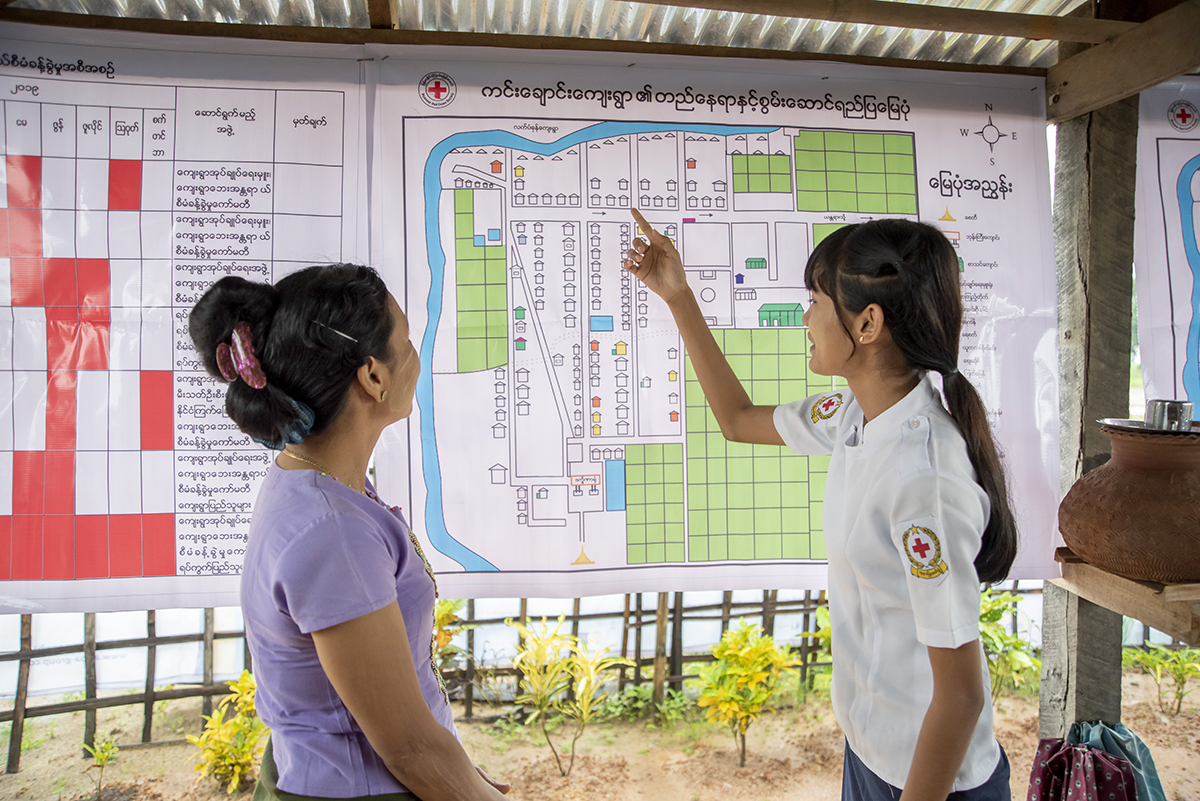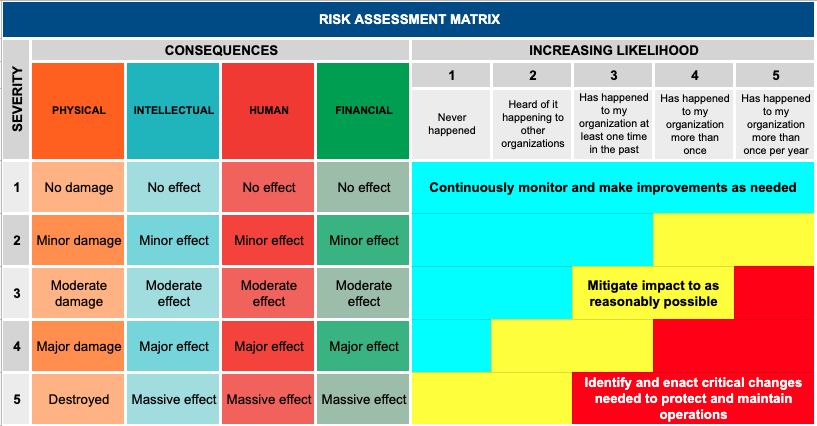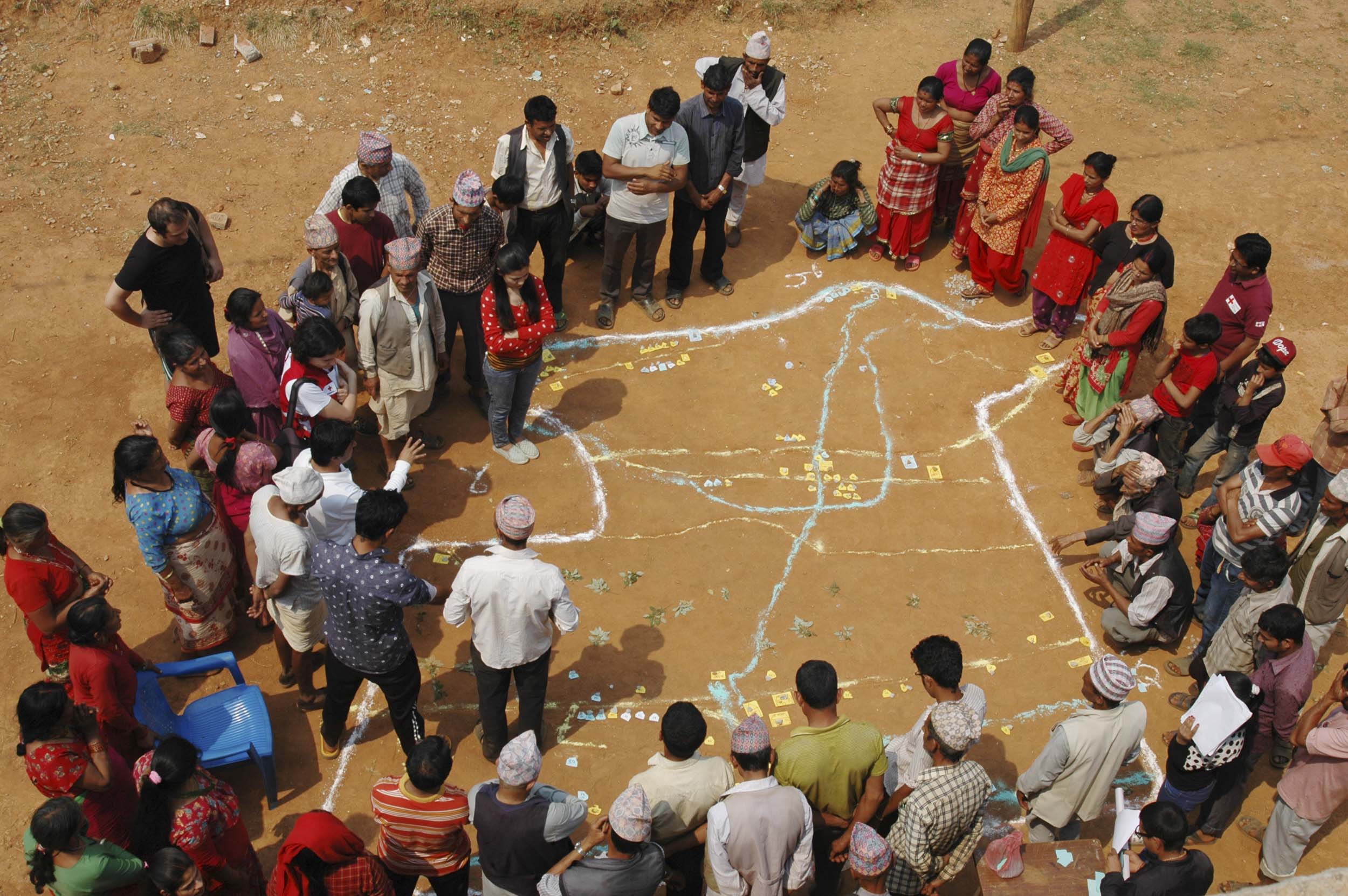Risk Assessment
Risk assessment is a crucial component of disaster preparedness that helps organizations and communities identify potential hazards, analyze their potential impacts, and prioritize mitigation efforts.

Purpose and Definition
In disaster management, risk assessment refers to determining the nature and extent of disaster risks by analyzing hazards and evaluating current exposure and vulnerability. The main goal is to estimate the possible economic, infrastructure, and social impacts of one or more hazards.
The key components of risk assessment include identifying potential hazards, such as natural disasters, technological issues, or human-caused events. Next is assessing vulnerability, which looks at how susceptible people, buildings, and systems are to damage based on factors like construction quality and population. Then, exposure analysis determines what could be affected by these hazards, such as people, property, or critical functions. Finally, risk analysis combines the likelihood of a hazard occurring with vulnerability and exposure to estimate the potential impacts on a community.
Why Risk Assessments Matter
- Informed Decision-Making: They provide a basis for prioritizing DRR investments and improving capabilities based on local conditions, needs, and preferences.
- Proactive Planning: They help predict potential deaths, damages, and losses before a disaster occurs, guiding effective mitigation actions.
- Policy Guidance: The results inform sustainable development plans, climate change adaptation strategies, and sector-specific risk reduction efforts.
- Resource Allocation: Risk assessments help guide financial management and investment decisions in disaster risk reduction.
City-wide Risk Assessment
Do-It-Together Toolkit for Building Urban Community Resilience
Risk Assessment Matrix
A Risk Assessment Matrix is a tool used to visualize and prioritize risks by assessing both the severity of potential consequences and the likelihood of occurrence, typically on a scale of 1 to 5. Here is a step-by-step guide on how to create the matrix:
Hazard risk can be understood by analyzing the losses of past disasters.
Start by thinking about what hazards have impacted your community and your organization in the past, and which you think are likely to impact you in the future. Hazards are “a dangerous phenomenon, substance, human activity or condition that may cause loss of life, injury or other health impacts, property damage, loss of livelihoods and services, social and economic disruption, or environmental damage.” - IFRC PAPE for DRR
Hazards do not have to turn into disasters. Knowing your risks can help you reduce your vulnerability to hazards and strengthen the resilience of your critical resources by taking the right preparedness steps
Critical resources are the assets your organization relies on that impact its business operations and its ability to recover in the event of a disaster. Think about which resources your company can not function without.
Critical resources could include:
- Physical (buildings, equipment, infrastructure, inventory)
- Human (staff)
- Intellectual (partnerships, processes, data)
- Financial (cash, credit)
To assess your risk, there are three main parameters to take into account:
- The consequences to each resource if the risk event happens
- The severity of the impact of the risk event if it happens
- The likelihood of the risk event to happen
For consequences, think specifically about what damage might occur to each resource if impacted by a particular hazard, based on severity level.
Assess the severity and likelihood parameters from 1 to 5, with 5 being the highest. The combination of likelihood and severity will calculate your risk.
Repeat this exercise for each hazard you identified in Step 1, to ensure you have fully accounted for potential impacts to your organization.
In the Priority Matrix below, assign each resource to a square based on the level of impact (the consequences you've identified) to each resource, and based on the likelihood of such an occurrence.
For example, if your organization is impacted by a building fire, the severity to physical resource (the building) would be high (perhaps a 4), and the likelihood also high (also a 4). A 4 in each places this risk in the red zone, identifying it as a critical area for mitigation activities.


Community Risk Assessment (CRA)
The importance of engaging vulnerable communities in disaster risk assessment and reduction is now widely acknowledged in disaster preparedness and mitigation, and increasingly in disaster response and recovery. It is essential for at-risk communities to actively participate in identifying and analyzing the risks they face, as well as in planning, designing, implementing, monitoring, and evaluating disaster risk activities.
Community Risk Assessment (CRA) is a participatory process where community members directly assess hazards, vulnerabilities, risks, and their coping capacities. The main goal is to provide data for local planning and risk reduction measures.
CRA serves two purposes:
- Informs Local Decision-Making: It provides data on the nature and level of risks, who is most affected, available means to reduce risks, and potential initiatives to reduce vulnerability and build capacity.
- Empowers Communities: The participatory process strengthens community engagement, allowing them to understand their capacities, enhance self-confidence, and actively contribute to problem-solving.
CRA identifies vulnerable groups based on social factors like gender, age, health, and ethnicity. It also includes an analysis of population density, livelihood security, and occupational risks. Additionally, it considers local perceptions of risk, which influence the choice of mitigation measures.

CRA Implementation Across Different Levels
CRA plays a crucial role, and stakeholders at all levels must be actively engaged to ensure a comprehensive approach to risk reduction.
Although community risk assessments are most of the time collective processes whereby the opinion and input is sought of communities in their entirety, in some cases specific input is sought from certain individuals or groups of individuals and households. Elderly are often a useful source of information when historical profiles or visualizations are carried out or disaster timelines are being drawn. Focus group discussions are often held with women, children, handicapped, certain ethnic groups, etc. to discuss their specific vulnerabilities and risk perceptions and identify appropriate solutions to their problems. Households are specifically targeted during CRAs when household/neighborhood vulnerability assessments or livelihoods and coping strategies analysis are being carried out.
Private sector actors are rarely at the forefront when community risk assessments are taking place. They can nevertheless be a useful source of information when secondary data are being collected or baselines are being established. They are also often identified an important asset/capacity when risk mapping is being carried out. They also play a key role in livelihood and neighborhood analyses, especially in urban areas. Their material, financial and technical support is also often sought in the community action plans which are developed as a result of the community risk assessments.
Community organizations are central to the process of community risk assessments. They plan and prepare for the CRAs, apply the tools with the community and systematize, analyse and interpret the data. They also return the information to the community for their verification and decision on the priorities for action. Community organizations also actively engage in the implementation of the risk reduction projects in close collaboration with the communities and support them in developing reports and proposals for local authorities and donors. In view of enhancing community resilience, it is important for community organizations to build up the capacity and ability of communities themselves to over time carry out self-assessments and be directly engaged in fundraising and advocacy with local authorities.
Local governments are increasingly recognizing the value of participatory assessments with communities. More and more they are also being invited to actively take part in the assessments and incorporate the outcomes of CRAs in their local development plans, as has happened in some cases the Philippines. In view of scaling up CRAs, it would be advisable if local governments could build up their own capacity in applying participatory techniques so that governmental risk reduction and development plans are being better informed by the realities of the most vulnerable population groups. National governments need to allocate more human, financial and material resources to the local level so that community risk assessments and the ensuing action plans will receive more substantial support.
Vulnerability and Capacity Assessment (VCA)
The Vulnerability and Capacity Assessment (VCA) is a participatory process designed to assess and address the key risks that affect communities. It focuses on understanding the community's vulnerability to these risks and their capacity to cope with and recover from disasters.
As a flagship initiative of the Red Cross and Red Crescent Movement, VCA enables National Societies to collaborate with vulnerable communities, helping them not only to recognize the hazards they face but also to empower them to take effective action based on their own skills, knowledge, and resources.
To learn more about the VCA approach and access step-by-step guidance on how National Societies can conduct participatory community risk assessments, explore our dedicated EVCA website.

